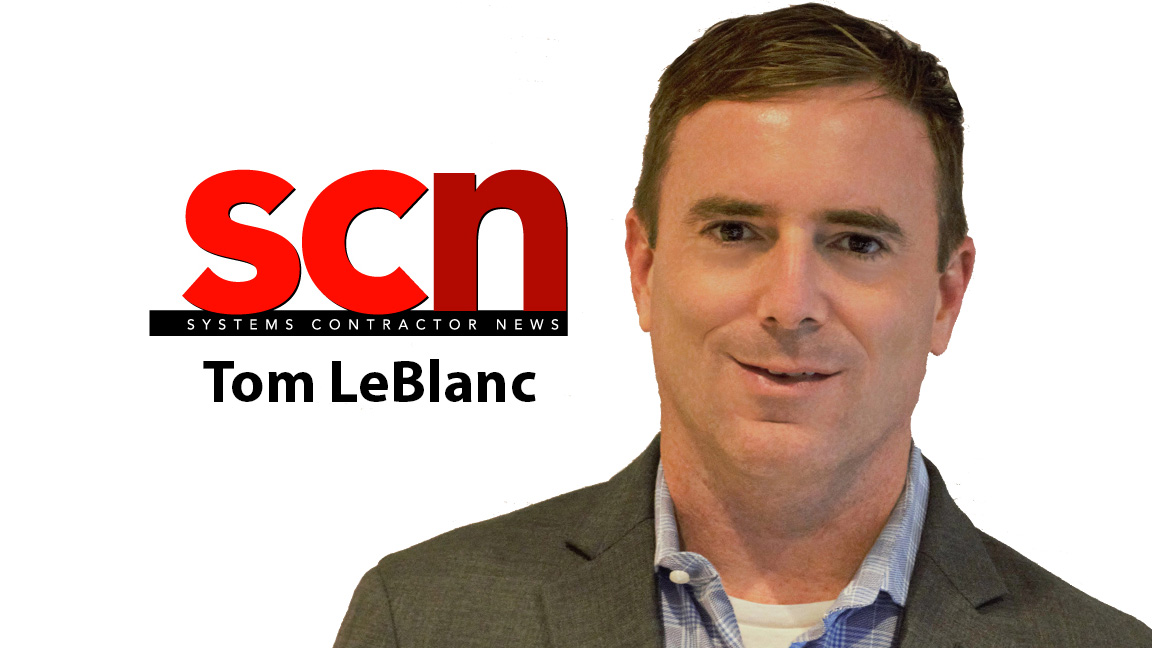NSCA: 6 Steps for Financial Success in 2023
Financial leadership will be critical to systems integrators in the coming months.

It is a great time to be an integration company leader. No, we’re not being sarcastic or pandering. Yes, we’re aware of the unprecedented supply chain and inflation-related challenges. It is a great time to be an integration company leader because the decisions you make now have tremendous impact. This is your moment; the tricky part is that you need to make sure you’re well-positioned to seize it.
Consider that we are at a unique point in time. What an integration company delivers to customers has never been more valuable. Customers across every vertical market are at a crossroads in terms of redefining the role of their physical spaces and determining their in-person-versus-remote-versus-hybrid communication strategies. Integrators play a critical role in helping them get back-to-office, back-to-classroom, back to … normal.
[NSCA Updates EOS Summer 2022 Report: U.S. Construction Spending Up 9%]
Meanwhile, integrators are poised to play a big role in the push toward more sustainable and healthy buildings. Well-positioned integrators have an enormously high ceiling, as Internet of Things (IoT) is the fastest-growing trend in the smart building sector. Integration is also the fastest-growing segment in the construction industry, because we enable workflows and make buildings safer for those doing the work.
For all these reasons and more, the value that integrators bring to their customers is more in demand than ever. It’s a great time to be an integrator, but:
• the supply chain creates project profitability challenges.
• product availability puts project timelines and customer satisfaction at risk.
A daily selection of the top stories for AV integrators, resellers and consultants. Sign up below.
• labor costs make healthy margins more difficult to attain.
• the pandemic continues to create workplace and talent management challenges.
• inflation uncertainty leads to tremendous challenges with budgeting and forecasting.
Financial leadership is always an important topic for integrators, but the current market and uncertain economy make it even more business critical as companies plan for success in 2023. It would be more fun to focus on how business critical the solutions that integrators offer have become—and it’s true. It’s also not the full story.
Integration company leaders should think about baking inflation into their budgeting for 2023.
NSCA is willing to be the not-so-fun uncle. We’re focusing on financial leadership because given all these factors, that’s what’s critical to integrators being able to capitalize on that great value in 2023. One of the keys to integration company success in 2023 is to make sure you have the right financial leaders in place. Then it’s just as important to empower them to make changes that can protect against vulnerabilities and guide toward profitability.
[Viewpoint: This Is How It Is Now]
With that priority in mind, here are six steps that NSCA recommends to position your integration company for success in 2023.
1) Prioritize Back of House
Many integration companies may need to elevate their focus on the glamorous parts of their business in 2023. While the solutions remain important, it’s essential to pay attention to the little things to protect profitability. That has been the focus of the NSCA Financial Leadership Council (FLC), a group of NSCA member company financial leaders and NSCA board members that collaborate on finance-focused resources for integrators. Integrators can leverage FLC guidance for intelligent supply chain, scheduling, cashflow, staffing decisions, and more.
2) Consider Cost Structure vs. Revenue Change
Leading into NSCA’s Fall 2022 Pivot to Profit business transformation conference, the FLC conducted a survey of 30 NSCA member company CFOs. The small, focused survey aimed to shed light on budgeting challenges and concerns heading into 2023.
One of the questions asked how they’ve seen their cost structure (total payroll plus general and administrative expenses relative to revenue) change over the past couple of years. For 80% of respondents, it has increased—and they’ve had to increase their cost structure (payroll, rents, vehicles, marketing, IT, etc.). The remaining 20% said it has stayed the same; none said it decreased.
To put these findings more simply, it means that at least four out of five integration companies need more revenue in 2023 in order to just break even. If they’re not already, integration company leaders should be cognizant of this metric so they can get a logical view of company performance in 2023.
3) Take Supply Chain Risk Mitigation Steps
Another question asked about the impact that the supply chain is having on their businesses. It’s no surprise that the results show an overwhelming impact. NSCA speculates that the small group that said “slight negative impact” are likely those that don’t rely on installation products and are more service/software oriented.
[Viewpoint: How Fast is the Pace of Technological Progress?]
Supply chain discussions are tricky and proposed solutions are often misleading. Since there are no snap-your-fingers resolutions to the global supply chain challenges, the board sought to focus on factors that are within integrator's control. NSCA recently released its Supply Chain Risk Mitigation Strategies for Integrators paper, which is based on input from board members and financial leaders in the NSCA community, as well as NSCA business resource partners with legal, sales, system design, and project management expertise. Some tips that are explained in further detail include:
• use Force Majeure language to project integrators if the project becomes impossible to complete.
• make proposals valid for only 30 days.
• pass costs to customers when it comes to freight and vendor product price increases.
• perform a true risk assessment prior to signing a contract.
• add a “Backlog Gross Profit % Column” to your work-in-progress report.
4) Recognize Source of Gross Profit Erosion
The FLC asked integration company financial leaders to evaluate their gross profit erosion and identify the biggest impact. The results show that about 65% said lack of equipment to finish projects, so it comes back to the supply chain. About 25% said supplier price increases after the project was sold, while small percentages say labor shortages and labor wage increases.
According to NSCA, profit should be north of 30%, but it’s very clear that lack of equipment to finish projects is crushing many integrators right now. Often, it’s that one missing part that is leading to an inability to recognize revenue on projects. The problem is that the integration industry just doesn’t have the profitability built in to withstand a 7.5% miss on our profit.
The advice here is for integration company leaders to pay close attention to where that gross profit erosion is coming from—if you don’t understand the root of the problem, it’s very difficult to address.
5) Take Stock of Backlog Trends
Backlog is such a volatile topic for integrators. During the depths of the pandemic, there was so much uncertainty about when customers would start spending money on integration again. NSCA member integrators were overwhelmingly concerned with keeping people employed—a daunting objective with a dried-up project pipeline.
[Is AVoIP at a Tipping Point?]
Then things changed. Return-to-work strategies led to great demand for integration services, so backlogs filled up again. That would be great news were it not coupled with supply chain challenges that often prevent those projects from being completed. Frustration among integrators is off the charts and with good reason.
The FLC asked integrators how they expect their backlog to change over the next year. The results showed that 85% expect their backlog to remain larger than normal as supply chain issues continue, while 15% expect backlog to return to normal and to be able to fulfill projects. No one expects backlog to shrink.
Solid backlog is a good thing, but not too much because of scorned customers and higher inventory. According to NSCA, integrators should strive to have about 50% of annual revenue in backlog. Given these challenges, they are likely way off that goal.
A good exercise for integration company financial leaders is to examine their best year in business and what was their backlog was at that point. Create a goal to hit that target. Also, take note of whether the backlog is of the variety that will produce high gross profit backlog versus jobs that aren’t likely to break even.
6) Reconsider Your 2023 Forecast
It’s not too late to reexamine how you budgeted for 2023. There are a lot of variables to creating an accurate budget for 2023. One is inflation. If you’re a $10M company this year, think about the impact that 1.2% year-over-year inflation will have. Even more impactful, some NSCA members are reporting 10%+ charge increases.
[Editorial: Lessons from the Fantasy Football Waiver Wire]
Integration company leaders should think about baking inflation into their budgeting for 2023. That $10M company might have to be an $11M company just to cover the inflation side of things. But remember, that’s not real growth, that’s inflation adjusted growth.
Forecasting for 2023 was more difficult than for a conventional year. Inflation-driven fuel charges, wage increases, material costs, and more complicate forecasting. NSCA’s best advice, again, is to focus on mitigation impact by focusing on areas that integrators can control.
Take a hard stance on de-risking your proposals with terms and conditions that are favorable to you. Quote what you have or can get, or have documented delivery and guaranteed price protection. Set parameters and eliminate projects that are below your minimum anticipated gross profit threshold (hopefully you can also eliminate projects that don’t have attached recurring revenue). And don’t undervalue yourself. This has been a topic of emphasis in the integration market for years, but it’s even more important these days.
A New Perspective
Many integration companies need a mind shift entering 2023. Most integration company leaders got into the business because of their passion for solving customer challenges with creative technology solutions. The industry wouldn’t exist without that passion.
For integration companies, however, financial leadership is every bit as important as the bells and whistles in 2023. Thanks to supply chain, inflation, volatile labor market, and other factors, being profitable isn’t easy.
Take this challenge seriously. In 2023, be the type of integration company leader that recognizes these challenges and puts your company in position to succeed. That means making sure you have the right financial leaders in place and empowering them to pursue profitability in 2023.
Empower Your Financial Leaders
Integration company leaders, including financial leaders, should attend NSCA’s Business & Leadership Conference in Dallas in February. In its 25th year, the conference has history of helping integration companies through tumultuous times. The emphasis in 2023 will be on resiliency amid the industry’s unprecedented challenges. Register at NSCA.org/BLC.

Tom LeBlanc is the executive director of NSCA.
